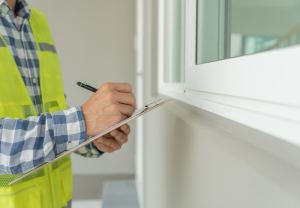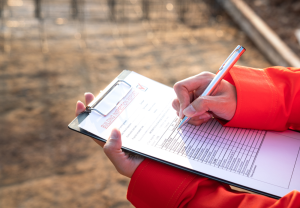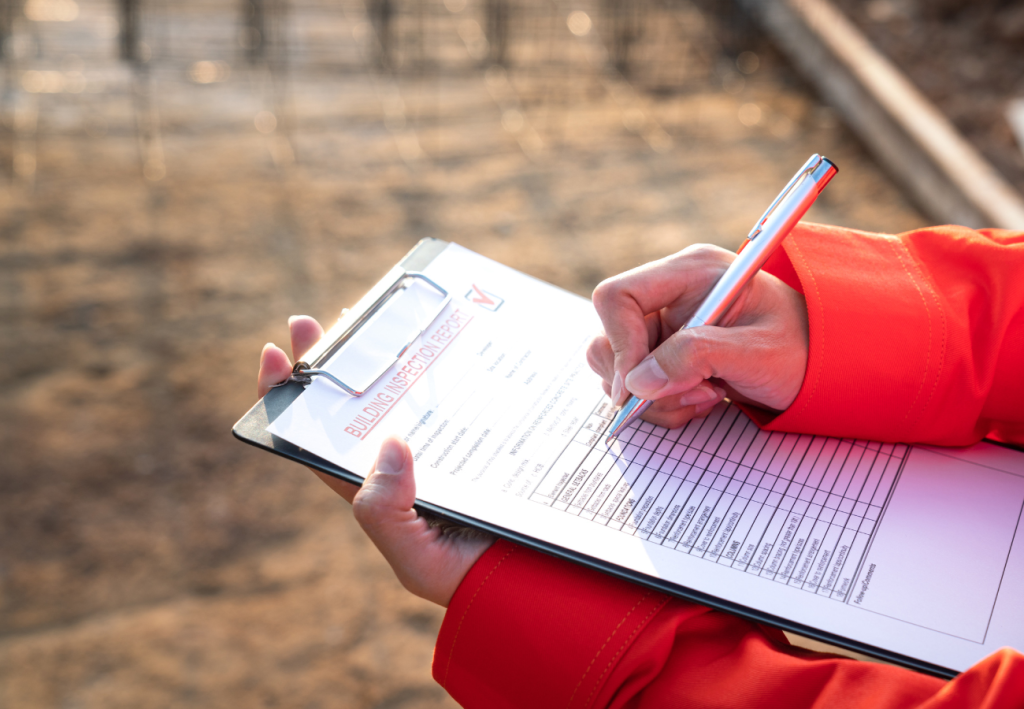Introduction
Navigating the complex world of property investment can be challenging, but there’s one crucial step that can protect you from potential pitfalls: the pre-purchase building inspection. This thorough examination of a property before you buy it is designed to uncover any hidden problems or defects that could end up costing you a fortune in repairs down the line.
In this comprehensive guide, we’ll explore why pre-purchase building inspections are so important for homebuyers like yourself. We’ll also share valuable insights and tips to help you make informed decisions throughout your property investment journey.
Whether you’re a first-time buyer or an experienced investor, understanding the ins and outs of pre-purchase inspections will empower you to negotiate better deals, avoid costly mistakes, and ultimately secure peace of mind in your real estate transactions.
One key aspect to consider is how to choose the right house inspection service. For those based in Adelaide, we’ve compiled some helpful tips on how to select the best house inspection service.
Additionally, it’s important to be aware of common issues that may arise during these inspections. To better prepare yourself, we recommend familiarising yourself with the 10 common issues found during residential building inspections, which could save you from unexpected surprises down the line.
Understanding Pre-Purchase Building Inspections
A pre-purchase building inspection is a critical evaluation process undertaken before committing to a property purchase. The primary objective of this inspection is to assess the overall condition of a property, ensuring that buyers are well-informed about any existing or potential issues.
Definition and Purpose
Pre-purchase building inspections serve as a safeguard for prospective homebuyers. By conducting a thorough evaluation, these inspections reveal hidden flaws that could lead to significant financial burdens if left unaddressed. This process not only protects the buyer’s investment but also aids in making informed decisions during the property acquisition journey.
Scope of Inspection
The scope of a pre-purchase building inspection is comprehensive, covering various components and systems within the property:
Foundation: Inspectors assess for structural integrity or signs of shifting.
Roofing: Evaluation for leaks, missing shingles, or other damages.
Plumbing: Checks for leakages, pipe conditions, and water pressure issues.
Electrical Systems: Ensures safety and functionality of wiring and outlets.
Interior and Exterior Walls: Examination for cracks or moisture intrusion.
Pest Infestation: Identification of any pest-related damage.
These elements represent just a portion of what certified inspectors examine to provide an accurate depiction of the property’s current state. Armed with this knowledge, buyers can proceed confidently in their real estate transactions.
Why Pre-Purchase Building Inspections Matter
A pre-purchase building inspection is a crucial step in risk assessment and investment protection. By identifying hidden flaws within the property, buyers can avoid unexpected financial burdens that might arise post-purchase. These inspections are a preventive measure against future costly repairs, offering insight into issues like leakages, rotting wood structures, and wall cracks that might not be immediately visible.
Evaluating critical systems and components of a property is another essential function of these inspections. Certified inspectors meticulously assess elements such as:
Foundation: Ensures stability and checks for any signs of shifting or cracking.
Roofing: Identifies potential leaks, missing shingles, or structural weaknesses.
Plumbing: Evaluates pipes, water pressure, and checks for any signs of corrosion or leakage.
Electrical Systems: Inspects wiring and circuit functionality for safety compliance.
These evaluations ensure the property’s safety and functionality, providing peace of mind to buyers. Through this process, you gain valuable insights that facilitate informed decision-making, empowering you to negotiate more effectively or reconsider your purchase if significant issues are uncovered. A thorough inspection equips you with the knowledge needed to make a confident investment choice.
Key Components Evaluated During a Pre-Purchase Building Inspection
During a pre-purchase building inspection, several critical elements are thoroughly evaluated to determine the property’s overall condition. Understanding what inspectors look for can help you appreciate the depth and value of such assessments.
1. Foundation
The foundation is often the first point of focus. Inspectors examine it for signs of cracks, settling, or shifting, which can indicate structural weaknesses. A compromised foundation could lead to significant repair costs if not addressed early.
2. Roofing Systems
The roof’s integrity is essential in protecting a home from weather elements. Inspectors will assess roofing materials, check for leaks or damages, and evaluate the state of gutters and downspouts. Any identified issues might suggest potential water intrusion problems that could affect the property’s interior.
3. Plumbing Systems
A comprehensive inspection includes evaluating the plumbing systems. This involves checking for leaks, corrosion, and ensuring that fixtures are functioning correctly. Problems in plumbing systems can lead to water damage or mould growth, both of which are costly to fix.
In addition to these key components, inspectors typically assess other essential aspects such as electrical systems, heating and cooling units, insulation quality, and exterior features like decks and driveways. Each component is crucial in determining a property’s safety and long-term maintenance needs, guiding you towards an informed investment decision.
Selecting a Qualified Inspector for Your Pre-Purchase Building Inspection
Choosing the right professional to conduct your pre-purchase building inspection is crucial for ensuring a thorough evaluation of the property’s condition. Not all inspectors are created equal, and selecting a certified inspector with the appropriate qualifications is essential.
Key Considerations:
Certification and Licensing: Ensure that your inspector holds relevant state licenses.
Advanced Certifications: Look for inspectors who have pursued advanced certifications. This demonstrates their commitment to staying updated on industry standards and practices, ensuring they are equipped to identify both common and complex issues.
Experience: An inspector with years of experience typically offers more comprehensive insights. They are likely to have encountered a wide range of issues, enabling them to perform a more insightful assessment.
Third-Party Status: Opt for third-party inspectors who are independent of real estate transactions. This independence eliminates potential conflicts of interest, ensuring an unbiased assessment.
By focusing on these factors, you enhance your chances of receiving a detailed inspection report that accurately reflects the property’s current state. Prioritising qualifications in your choice of inspector safeguards your investment by providing you with valuable insights necessary for making informed decisions.
Understanding the Costs Involved in Pre-Purchase Building Inspections
When budgeting for a pre-purchase building inspection, it’s crucial to understand the potential costs involved. Several factors can influence its cost, making it essential to consider these variables when planning your budget.
Factors Affecting Inspection Costs:
Property Size: Larger properties often require more time and resources to inspect thoroughly, leading to higher fees.
Location: Properties located in urban areas or regions with a high cost of living might incur higher inspection costs due to increased operational expenses for inspectors.
Inspector’s Experience and Certification: Highly qualified inspectors with advanced certifications may charge more for their expertise, ensuring a comprehensive evaluation of the property.
Understanding these factors helps you make informed decisions about your budget considerations. Opting for a thorough inspection by experienced professionals may seem costly upfront but can save significant expenses on unforeseen repairs in the future.
Employing a detailed assessment ensures that you’re aware of potential issues, allowing you to negotiate wisely and avoid unexpected financial burdens post-purchase.
Common Issues Identified by Inspectors During Pre-Purchase Assessments
During a pre-purchase building inspection, identifying potential structural problems and maintenance issues is crucial. These inspections often reveal common concerns that could impact the long-term value and safety of a property.
1. Leakages
Leakages are frequently discovered, posing risks of water damage and mould growth. Inspectors examine areas such as bathrooms, kitchens, and basements where leaks are most prevalent. Addressing these issues before purchase can prevent costly repairs down the line.
2. Rotting Wood Structures
Rotting wood structures represent another significant concern. They compromise the integrity of essential components like decks, support beams, and window frames. This decay is often due to prolonged exposure to moisture or termite infestation.
3. Wall Cracks
Wall cracks can indicate underlying structural problems. Small cracks may be superficial, but larger ones might suggest foundation settling or shifting. Inspectors assess these thoroughly to determine their severity and potential impact on the property.
4. Roofing Damages
Roofing damages, including missing shingles, sagging roofs, or faulty gutters, are also commonly flagged during inspections. These issues not only affect aesthetic appeal but also pose risks to the overall structure by allowing water infiltration.
Understanding these prevalent concerns equips you with valuable insights into potential repair needs and helps you make informed decisions about your property investment.
The Step-by-Step Process of a Pre-Purchase Building Inspection
Understanding the inspection duration and procedures is crucial for anyone considering a pre-purchase building inspection. Typically, an inspection lasts about 4 to 5 hours, during which a certified inspector conducts a thorough examination of the property. Here’s a breakdown of the key procedures involved in this comprehensive assessment:
Exterior Evaluation: The process begins with inspecting the property’s exterior. This includes assessing the foundation, walls, roofing, gutters, and drainage systems for any visible damage or structural issues.
Interior Examination: Inside, inspectors focus on walls, ceilings, floors, windows, and doors. They check for signs of water damage, cracks, or other structural problems that might affect the integrity of the building.
System Assessments: Critical systems such as plumbing, electrical wiring, and heating and cooling are scrutinised to ensure they are functioning properly and meet safety standards.
Roof Inspection: Inspectors climb onto the roof to examine its condition closely. They look for missing shingles, leaks, and potential weaknesses in roofing materials.
Basement and Attic Review: These areas often hide problems like mould growth or pest infestations. Inspectors carefully check for any signs of moisture intrusion or insulation issues.
Final Report Compilation: After completing the physical inspection, the inspector compiles their findings into a detailed report highlighting any defects or areas of concern that require attention.
By understanding these systematic procedures, you can better appreciate how inspectors work to ensure your potential new home is safe and sound before you make an investment decision.
Navigating Post-Inspection Scenarios: Your Options as a Buyer
Receiving the results of a pre-purchase building inspection can open up several avenues for negotiation strategies. As a buyer, you have the opportunity to address any issues identified during the inspection and make informed decisions on how to proceed with your investment.
Courses of Action After Inspection Findings:
Request Repairs: You can ask the seller to address specific repairs before finalising the purchase. This approach ensures that the property’s condition aligns with your expectations without additional costs on your part.
Renegotiate the Purchase Price: If significant issues are uncovered, renegotiating the purchase price might be a viable option. This strategy allows you to account for repair costs by adjusting the overall investment required for the property.
Seller Concessions: In scenarios where immediate repairs are not feasible, you could negotiate seller concessions. These may include a reduction in closing costs or credit towards future repairs.
Withdraw from Purchase: Should the inspection reveal critical flaws that significantly alter your interest in the property, withdrawing from the purchase agreement could be considered. An inspection contingency clause in your contract often supports this decision.
Armed with detailed inspection findings, you can confidently engage in negotiations, ensuring that your property investment is secure and aligns with both your expectations and financial considerations.
Considering Environmental Risks: When to Go Beyond Standard Inspections
During a pre-purchase building inspection, potential environmental hazards might surface, influencing the decision-making process. These hazards include:
Asbestos: Often found in older properties, posing health risks if disturbed.
Lead Paint: Common in homes built before 1978, it can lead to serious health problems.
Mould and Mildew: Resulting from moisture issues, these can affect air quality and health.
Radon Gas: A naturally occurring gas that can accumulate indoors and pose significant health risks.
When such hazards are suspected, consider extending beyond standard inspections by commissioning a Phase 1 Environmental Site Assessment (ESA). This assessment evaluates the property for potential contamination and environmental liabilities. Engaging in this additional evaluation ensures that all environmental concerns are thoroughly addressed, safeguarding not just your investment but also your well-being.
Understanding Inspection Contingency Clauses in Real Estate Contracts
Inspection contingency clauses are critical components of real estate contracts that offer buyers a layer of protection during the negotiation phase. These clauses provide an opportunity for buyers to back out of the deal or renegotiate terms based on the outcomes of a pre-purchase building inspection.
Here’s what you need to know about these important clauses:
1. Purpose
Inspection contingency clauses safeguard buyers by allowing them to withdraw from a purchase agreement without financial penalty if significant issues are discovered during the inspection process. This ensures that purchasers are not locked into buying a property with unforeseen defects.
2. Functionality
Once an inspection is completed, the buyer can review the findings and decide whether to proceed with the purchase, request repairs, seek a price reduction, or cancel the transaction altogether. The clause specifies a time frame within which these decisions must be made, providing a structured approach to addressing potential concerns.
3. Negotiation Tool
During contract discussions, these clauses serve as powerful negotiation tools. Sellers are often motivated to address any identified issues or adjust pricing to keep the deal attractive for buyers.
By incorporating an inspection contingency clause in your real estate contract, you ensure that your investment is protected and your interests are prioritised throughout the purchasing process.
Conclusion: Why Pre-Purchase Building Inspections Matter in Property Transactions
Pre-purchase building inspections are crucial for ensuring property safety and making informed decisions. These inspections uncover hidden issues that could affect the value and stability of a property, giving buyers confidence before finalising any deal.
Key Takeaways:
Ensuring Compliance with Safety Standards: Certified inspectors evaluate critical systems to ensure they meet current safety regulations. This compliance not only protects your investment but also safeguards future inhabitants from potential hazards.
Peace of Mind: By identifying issues early, you can negotiate repairs or adjust purchase terms, reducing the risk of unexpected costs after the purchase.
Informed Decisions: With detailed inspection reports in hand, you can better understand the true condition and worth of a property, leading to more confident investment choices.
Make pre-purchase building inspections a priority in your real estate journey. By doing so, you’ll uphold standards, protect your financial interests, and find peace of mind in your property transactions.
Frequently Asked Questions
A pre-purchase building inspection is a thorough assessment of a property’s condition conducted before the purchase. Its main objectives are to evaluate the property’s structural integrity, identify potential issues, and provide buyers with essential insights to make informed decisions during their property investment journey.
Pre-purchase building inspections are crucial as they protect buyers from hidden flaws that could lead to significant financial burdens after the purchase. They help evaluate critical systems and components of a property, ensuring its safety and functionality, which ultimately aids in informed decision-making.
Inspectors typically assess several essential elements during a pre-purchase building inspection, including the foundation, roofing systems, plumbing, electrical systems, and other critical infrastructure to determine the overall condition of the property.
It is vital to hire certified third-party inspectors who possess relevant state licenses and advanced certifications. This ensures a thorough evaluation of the property and provides peace of mind regarding the quality of the inspection.
The average cost range for pre-purchase building inspections typically falls between $1,250 and $2,500. Factors that may influence pricing include property size, location, and specific services required during the inspection process.
If issues are identified in the inspection report, you have several options as a buyer. You can request repairs from the seller or renegotiate the purchase price based on the identified issues to ensure that your investment is protected.
Subscribe To Our Newsletter
Get updates and learn from the best
More To Explore

Why Every Homebuyer Should Invest in a Residential Building Inspection
Introduction Investing in a residential building inspection is an essential step for any homebuyer. This critical evaluation serves as your safeguard, providing a comprehensive understanding of the property’s condition before making a financial commitment. Why are these inspections so important? They reveal the true state of a home, uncovering potential issues that could be costly

The Ultimate Guide to Pre-Purchase Building Inspections
Introduction Navigating the complex world of property investment can be challenging, but there’s one crucial step that can protect you from potential pitfalls: the pre-purchase building inspection. This thorough examination of a property before you buy it is designed to uncover any hidden problems or defects that could end up costing you a fortune in


